Roy G Beran, School of Medicine at Griffith University, Australia
There exist many theories regarding the basis of gait inertia and instability for people with Parkinson’s disease (PD). This presentation will use a video to demonstrate an alternative explanation for this occurrence together with a very simple mode of intervention, based o [....] » Read More
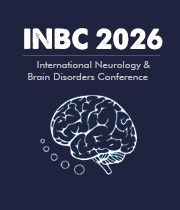








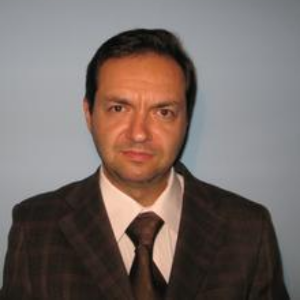












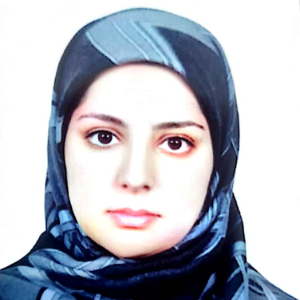




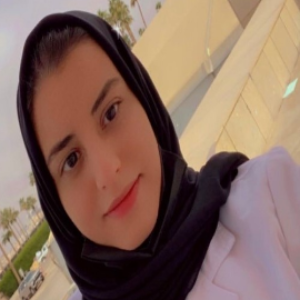
















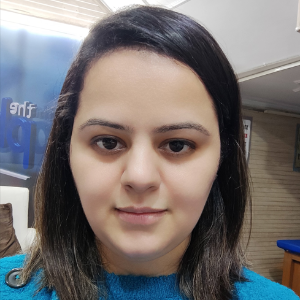


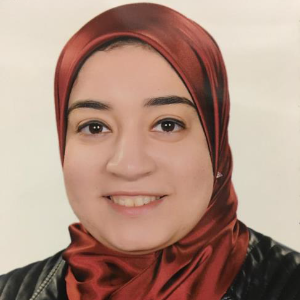








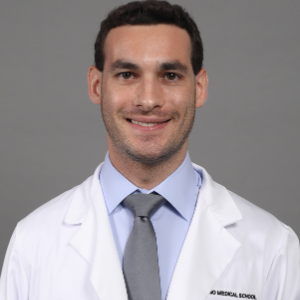






Title : Nanomedicine and the Brain: A Perfect Combination ?
Thomas J Webster, Brown University, United States
Nanotechnology has revolutionized numerous industries, particularly medicine. Nanoparticles, nanotubes, drug delivery nanoparticles, and nanotextured neural probes are just several of many examples where nanomedicine is positively impacting neuroscience. This presentation will su [....] » Read More
Title : In vitro modelling of brain development and neurodegenerative diseases
Andreas Till, University of Bonn, Germany
Given the complex etiopathology of neurodegenerative diseases and the limited access to vital human brain cells as suitable research platform, there is an increasing demand of innovative human-specific model systems that help elucidating the causative mechanisms of these disorder [....] » Read More
Title : Rogue Percepts = Rogue Responses: What Are the Possible Sets of Initial Conditions That Give Rise to Willis-Ekbom Disease - Restless Legs Syndrome (RLS), And Can RLS be Therapeutically Pacified? - A NeuroPhysics Therapy Study and Hypothesis Based Upon Observations and Outcomes -
Ken Ware, NeuroPhysics Therapy Institute and Research Centre, Australia
The human central nervous system (CNS) fundamentally does something elegant and simple and is programmed to abide by some simple sets of rules and initial conditions. Fundamentally, the CNS takes in and perceives information coming in from the outside world and responds to it. Ho [....] » Read More
Title : The case of jahi mcmath: Dilemmas and controversies in the diagnosis of brain death
Calixto Machado, Institute of Neurology and Neurosurgery, Cuba
I was a main expert in the case of Jahi McMath, who was diagnosed with brain death (BD). Nonetheless, ancillary tests performed nine months after the initial brain insult showed conservation of intracranial structures, EEG activity, and autonomic reactivity to the “Mother T [....] » Read More
Title : Prognostic indicators of spontaneous neurological recovery following Traumatic Spinal Cord Injuries and the role of the Neurologist
W S El Masri, Keele University, United Kingdom
Spontaneous Neurological Recovery is very common in patients with incomplete traumatic spinal cord injuries. This is provided no further mechanical and non-mechanical damage is inflicted onto the injured cord. Currently there is great deal of emphasis on the threats of the Biomec [....] » Read More
Title : Application of activity-based probe, MV151, in the mammalian nervous system reveals new insight into proteasome changes in human Alzheimer’s disease brain
Fulya Turker, Johns Hopkins University School of Medicine, United States
Proteasome complexes play a critical role in human brain health and disease. Despite enormous effort, a deep understanding of proteasome composition, activity, and abundance in the human brain remains poorly understood. Here, we describe a series of tools that can measure the cat [....] » Read More
Title : Multi-Characteristic Opsin Gene Delivery for Neuromodulation of Inflammatory and Persistent Pain Sensation in Rodent Model
Arman John Fijany, TCU School of Medicine, United States
Pain is an uncomfortable sensation perceived by the nervous system that can have a variety of different causes. Pain can be seen as a complication of disease, emotional states and even as a standalone pathology. The neuroscience of pain is poorly understood. Multiple levels of co [....] » Read More
Title : VWF regulates the expression of adhesion molecules, modulating vascular permeability in endothelial cells after a TBI.
Marina Martinez Vargas, Baylor College of Medicine, United States
von Willebrand factor (VWF) is a multimeric protein that mediates thromboinflammation and has been linked to traumatic brain injury (TBI), specifically in the pathogenesis of early brain injury. Activated endothelium secretes VWF multimers as long hyperadhesive strings. During TB [....] » Read More
Title : Optogenetic neuromodulation of allodynia and hyperalgesia pain responses in rodent model
Arman John Fijany, TCU School of Medicine, United States
Introduction: While pain is the body’s normal physiological response to tissue damage, it is a significant contributor to worldwide disability as well as physical and psychological distress. These deleterious effects are typically dictated by the duration and intensity of p [....] » Read More
Title : A new outlook on brain injury recovery
Mohammed Elamir, Aviv Clinics, United States
In this presentation, Dr. Mohammed Elamir and Dr. Amir Hadanny will present nearly a decade of research in the use of Hyperbaric Oxygen Therapy (HBOT) to treat chronic symptoms related to Traumatic Brain Injury (TBI) and concussion that can be cognitively and physically debilitat [....] » Read More
Title : A new outlook on brain injury recovery
Amir Hadanny, Aviv Clinics, United States
In this presentation, Dr. Mohammed Elamir and Dr. Amir Hadanny will present nearly a decade of research in the use of Hyperbaric Oxygen Therapy (HBOT) to treat chronic symptoms related to Traumatic Brain Injury (TBI) and concussion that can be cognitively and physically debilitat [....] » Read More
Title : MRI-navigated transcranial pulse stimulation (TPS) as an alternative option for severe treatment-resistant depression– a case report
Ulrich Sprick, Alexius/Josef Clinic, Germany
Patients with severe therapy-resistant depressive disorders repeatedly pose enormous treatment challenges in psychiatry and neurology. Transcranial pulse stimulation (TPS) as a new non-invasive therapy method could represent a new alternative to standard treatment such as ECT, ma [....] » Read More
Title : Could We See Alzheimer’s Disease Through the Eye?
Aygun BadaLova, University College London, United Kingdom
One of the most common and prevalent neurodegenerative disorders are Alzheimer's and Dementia which are considered significant causes of mortality and morbidity in today’s society particularly among the elderly population.(Erkkinen, Kim et al. 2018)The etiologic and pat [....] » Read More
Title : Screening of biomarkers for acute ischemic stroke using bioinformatics analysis
Lakshmi Sundeep, Hindustan Institute of Technology and Science, India
Acute Ischemic Stroke (AIS) is a life-threatening cerebrovascular illness. The cause of AIS is unknown, and treatment options are limited. The study is to find out which genes are expressed in AISs and use that information to guide future research and treatment. The raw datasets [....] » Read More
Title : Lived Experience of the African American Informal Caregivers of a Family Member with Alzheimer’s Disease and Related dementia
Dell G Mars, Southeastern Louisiana University School of Nursing, United States
Purpose: The purpose of this qualitative study was to describe the lived experience of African American informal caregivers of family members of Alzheimer’s Disease and Related Dementias (ADRD) in a home environment. Design and Method: This phenomenological descriptive [....] » Read More
Title : Mortality, length of stay, and cost of hospitalization among adult patients with multiple sclerosis: results from the National Inpatient Sample.
Alsu Zagorulko, Illinois Center for Neurological and Behavioral Medicine, United States
Introduction: The study was performed to evaluate factors associated with in-hospital mortality, length of stay (LOS), and hospitalization cost among adults with multiple sclerosis (MS). Methods. We used the National Inpatient Sample (2019) to identify adult hospitalizations w [....] » Read More
Title : The apt diagnosis of progressive supranuclear palsy with frontal predominance: A case report
Solomon Nittala DO MS, Larkin Community Hospital Palm Springs Campus, United States
Originally described in 1964, progressive supranuclear palsy (PSP) is a neurodegenerative tauopathy with a prevalence of approximately 45% among other parkinsonian-plus syndromes. PSP can be categorized into various phenotypes among which 6% belong to the PSP-frontal predominan [....] » Read More
Title : Rapidly Progressive Sporadic Creutzfeldt-Jakob Disease (CJD): A Case Report and Literature Review
Elita Delbruck, California University of Science and Medicine,, United States
Prion diseases are rare and rapidly progressive neuro-degenerative disorders that are poorly understood. Universally fatal, diagnosis primarily focuses on the excluding other treatable diseases. This case of probable sporadic Creutzfeldt-Jakob Disease (sCJD) in an otherwise healt [....] » Read More
Title : A Mild Cognitive Impairment Diagnostic Tool In Comparison To The Unified Huntington’s Disease Rating Scale: Cognitive Battery
Luis A Sierra, Beth Israel Deaconess Medical Center, United States
Background: A diagnosis of manifest Huntington’s disease (HD) is based primarily on motor symptoms, but early cognitive decline is common in the pre-manifest HD period (preHD). Early symptom detection in HD has important implications for monitoring both disease pr [....] » Read More
Title : Improving Stroke Quality Metrics at Robert Packer Hospital
Rebecca Lees, Guthrie Robert Packer Hospital, United States
Stroke is the number one preventable cause of disability and a leading cause of death in both men and women; rapid assessment and treatment is critical to improve outcomes for patients. Guthrie Robert Packer Hospital received The Joint Commission Primary Stroke Center certificati [....] » Read More
Title : A New Methodological Approach to Improve the "Real Word" Effectiveness of Ketamine Infusion Therapy for Treatment-Resistant Depression
Gerald W. Grass, Ketamine Research Institute, United States
Objective: Ketamine is recognized as a rapidly acting antidepressant; however, discrepancies exist between the "Efficacy" reported in research studies (70-85%) versus significantly lower "Effectiveness" (18.3-45.5%) reported in community-based settings. To off [....] » Read More
Title : Pre-exposure to acute stress modulates the molecular response to a mild traumatic brain injury
Johanna Christina Reiners, Ulm University, Germany
Stress is generally defined as a real or interpreted threat to the psychological or physiological integrity of an individual that results in physiological and/or behavioral responses. Threatening stimuli trigger neuronal responses in the brain that cause an immediate adaptive sys [....] » Read More
Title : Investigation of low frequency thalamic and pallidal local field potential correlation with voluntary movement in children with dystonia
Maral Kasiri, University of California, United States
Understanding the relationship between neural activity and voluntary movement provides new insights into understanding the mechanism underlying neural control of movement in both healthy people and those with movement disorders. To investigate the relationship between deep brain [....] » Read More
Title : NF- ?B is a critical mediator of age-dependent white matter loss
Judith Stefanie Schlett, Institute of Physiological Chemistry, Ulm University, Germany
Infl ammaging represents an accepted concept where the immune system shifts to a low-grade chronic pro- infl ammatory state without overt infection upon aging. In the CNS, infl ammaging is mainly driven by glia cells and associated with neurodegenerative processes. White matter d [....] » Read More
Title : Imatinib as a treatment for prion disease: A historical case of Sporadic Creutzfeldt Jacob disease complicating chronic myeloid leukemia on Imatinib.
Smaili Rachid, University hospital of Tangier- Tétouan-Al Hoceima, France
Background: Creutzfeldt Jakob disease (CJD) is a fatal and rare neurodegenerative disease, It is classified into 3 subgroups: sporadic, genetic and acquired. Sporadic CJD is the most common form, which may be manifested with misleading neuropsychiatric symptoms and resulting in [....] » Read More
Title : Design and synthesis of novel psilocin prodrugs with improved metabolic and pharmacokinetic properties as candidate therapies for treatment-resistant anxiety disorders
Peter J. Facchini, Enveric Biosciences, Canada
The psychedelic compound psilocybin has shown therapeutic benefit in the treatment of several psychiatric diseases. A recent randomized clinical trial conducted at Johns Hopkins Bayview Medical Center demonstrated the efficacy of psilocybin-assisted therapy in the treatment of Ma [....] » Read More
Title : Isolation of a novel N-methyltransferase from psychedelic cane toad (Rhinella murina) deployable in bio-based production platforms for psychiatric drug discovery
Jillian M. Hagel, 1Enveric Biosciences, Inc, Canada
The skin and paratoid gland secretions of many toads in the Bufonidae family contain several natural products with importance to traditional medicine. Some of these compounds, such the indole amines 5-hydroxy-N,N-dimethyltryptamine (bufotenine) and 5-methoxy-N,N-dimethyltryptamin [....] » Read More
Title : Parsonage–Turner syndrome following COVID-19 vaccination: case series
Ilhan Yu, Nowon eulji university hospital, Korea, Republic of
Background Severe acute respiratory syndrome coronavirus 2 is a coronavirus that has recently appeared, rapidly spreads, and results in coronavirus disease 2019 (COVID-19). Moderna mRNA-1273 and Pfizer-BioNTech BNT162b2 vaccines are among the most widely used and effective va [....] » Read More
Title : A selective p38?/? MAPK inhibitor alleviates neuropathology and cognitive impairment, and modulates microglia function in 5xFAD mouse
Min Sung Gee, Kyung Hee University, Korea, Republic of
Chronic neuroinflammation, aggressive amyloid beta (Aβ) deposition, neuronal cell loss and cognitive impairment are pathological symptoms of Alzheimer’s disease (AD). Regarding these symptoms, resolution of neuroinflammation and inhibition of Aβ-driven pathology m [....] » Read More
Title : Multiple Autoimmune Syndrome: Combination of Neuromyelitis Optica Spectrum Disorder with Myastenia Gravis, Systemic Lupus Erythamatosis and Hashimato Tiroiditis
Vildan Tuncbilek, Tekirdağ Namık Kemal University, Turkey
Autoimmunity reflects an altered immune status, therefore the presence of more than one disorder is not uncommon. The coexistence of three or more autoimmune diseases in a patient constitutes multiple autoimmune syndrome (MAS). This is an interesting case of a middle-aged female [....] » Read More